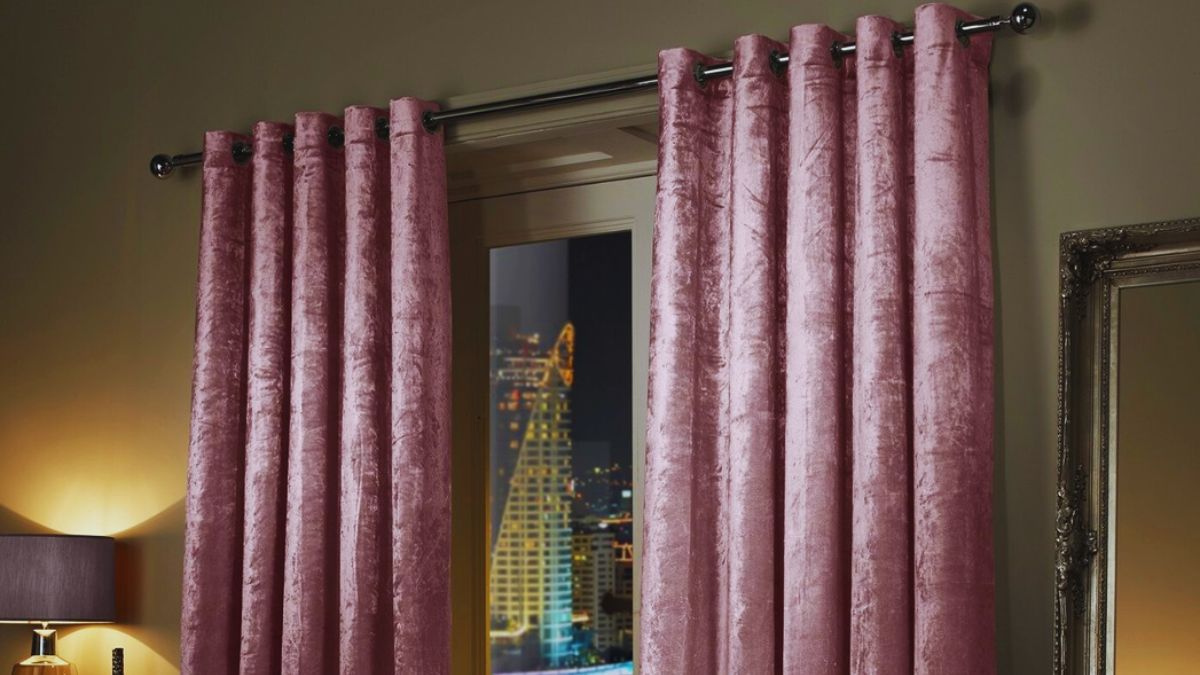As the chill of winter begins to seep in, it’s time to give your home a seasonal upgrade — starting with your curtains.
While light cottons and airy sheers suit summer’s sunshine, winter calls for heavier, warmer fabrics that not only look rich but also help insulate your home space. A simple curtain swap can transform the way your home feels — adding the much-needed warmth, texture, and comfort without needing a full décor overhaul.
Step 1: Switch to Heavier Winter Fabrics
Your first task in a winter curtain refresh is changing the material.
- Pack away lightweight fabrics: Fold and store your summer curtains — especially those made of cotton, linen, or sheer materials — in vacuum-sealed bags to keep them clean and fresh until next season.
- Choose thick, textured fabrics: Opt for luxurious materials like velvet, wool blends, jacquard, or lined cotton. These fabrics don’t just add visual depth but also act as effective insulators, trapping warm air inside while keeping the cold out. Velvet, in particular, lends a rich, elegant feel and instantly makes a room look cozier.
A good rule of thumb: the heavier the fabric, the better it will perform at reducing drafts and conserving heat.

Step 2: Introduce a Rich, Seasonal Colour Palette
Winter décor naturally leans toward deeper, more saturated hues. These tones absorb light and make a room feel grounded and intimate.
- Embrace deeper shades: Go for forest green, burgundy, burnt orange, navy, rust, or plum to bring warmth and depth to your interiors.
- Use earthy neutrals for balance: If bold tones aren’t your style, choose taupe, beige, or warm greys as a subtle backdrop that still feels seasonally appropriate.
- Coordinate your accessories: Match your curtain colours with other soft furnishings — such as throws, cushions, and lampshades — to create a cohesive, inviting winter aesthetic.
A well-chosen palette not only enhances warmth but also instantly elevates your décor, making the entire space feel more intentional and welcoming.
Step 3: Optimize for Insulation and Efficiency
Beyond aesthetics, winter curtains play a big role in energy efficiency. A significant amount of heat escapes through bare or lightly covered windows, and heavier curtains can minimize that loss dramatically.
- Choose full-length curtains: Ensure your curtains extend all the way to the floor. This prevents drafts from sneaking in and keeps the cold air at bay.
- Add a thermal lining: Thermal backed liners help trap warmth indoors and maintain a consistent temperature. Acrylic foam or thermal-backed materials can significantly lower heating costs.
- Use pelmets for added insulation: Installing a pelmet — a structured cover above your curtain rod — seals off the top of the window and blocks cold air. It also hides curtain hardware for a cleaner, more polished look.
These practical upgrades turn your windows into quiet barriers against the chill while maintaining a cozy indoor environment.

Step 4: Style with Layers and Details
Once you’ve sorted out the materials and insulation, the fun part begins — styling your winter curtains.
- Layer your window treatments: Keep your sheer curtains beneath the heavier ones. This allows you to enjoy daylight while maintaining privacy and warmth when the heavier drapes are closed at night.
- Try Roman blinds: Pairing Roman blinds with sheers adds extra insulation and visual structure. The layered look feels plush and tailored — ideal for winter interiors.
- Use tie-backs and decorative rods: Tiebacks help control the drape’s volume and add a touch of elegance. Decorative curtain rods in darker metallics or wood finishes can further reinforce your winter theme.
This layering approach adds both functionality and aesthetic richness, making your windows a statement feature.
Step 5: Take Care of Practical Details
Heavier winter curtains need a bit more attention before they go up.
- Check your hardware: Make sure curtain rods and brackets are sturdy enough to support the additional weight.
- Clean and store summer curtains properly: Wash or dry-clean them before storing to prevent mildew or odour.
- Steam your new curtains: Once hung, give them a gentle steam to remove creases and allow the fabric to fall naturally. This not only improves their appearance but also helps seal any small air gaps for better insulation.

Winter curtains do more than just frame a window — they redefine the mood of your home. When temperatures drop, the right curtains become both a design statement and a functional comfort layer. With a thoughtful seasonal switch, your windows can turn into elegant, insulating features that make your home feel cozy, stylish, and ready for winter.
FAQs on Curtains at Home for Winter Season
1) What fabrics are best for winter curtains?
Heavier fabrics like velvet, wool blends and thick lined cotton work best for winters. These materials help trap warmth and add a cozy look to your space.
2) What colors make a room feel warmer in winter?
Rich, deep shades such as burgundy, forest green, navy, rust, and plum create a warm and inviting atmosphere.
3) How can I make my curtains more insulating during winter?
To improve insulation, choose full-length curtains with thermal or fleece-backed linings; or you can layer sheers with heavier drapes can also help retain heat and reduce energy loss.

